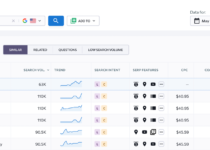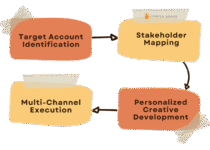The Power and Pitfalls of Product-Led Growth
If you’ve never heard of product-led growth, then you’re in the right place.
PLG is a strategy many companies are adopting to generate more growth, traffic and people using their product as the primary vehicle for expansion. It’s an attractive business model for many reasons, especially if your primary offer is a digital service that can scale participants who use it for more revenue.
In this post, we’ll explore more of the gains that can come about from a product-led growth strategy, as well as the drawbacks that go with it (because it’s not all a walk in the park, as you might think).
to a mere 7.7% in 2022.
Transitioning Beyond PLG: The Case Study of MongoDB
While many businesses struggle with the constraints of a strict product-led growth model, some manage to evolve and adapt with aplomb. Among these success stories, MongoDB stands out, showcasing how a company can grow from a PLG-centric model to dominate the enterprise sector.
Back in 2009, MongoDB entered the tech scene as an open-source, document-based database:

In an era where traditional relational databases dominated the landscape, MongoDB brought a fresh approach, focusing on flexibility and scalability. Their open-source nature was a strategic move to garner interest and rapidly increase user adoption.
And it worked. Developers and tech enthusiasts worldwide quickly embraced MongoDB, leading to millions of downloads. As the company grew in popularity, the leadership team observed a significant pattern: While their PLG approach was excellent for amassing a large user base, it might not be the best model for sustained, long-term growth.
Relying solely on individual developers or smaller startups had its constraints, both in terms of revenue potential and market reach. To truly expand and diversify, MongoDB needed to tap into the lucrative enterprise market, where bigger players with deeper pockets resided.
Making a transition to cater to enterprise needs wasn’t just about pitching to larger companies. It required a comprehensive reevaluation of their offerings, ensuring that they met the stringent demands of large-scale businesses. This meant enhancing security features, offering more robust support, introducing scalable solutions and providing a suite of tools tailored to enterprise requirements.
Today, MongoDB proudly reports sales figures exceeding a billion dollars. But it’s not just about the revenue. The company now serves nearly 2,300 enterprise customers, each committing over $100,000 annually.
It just goes to show that while PLG can be a fantastic launchpad, long-term success often requires an understanding of market needs and the delivery of consistent value at every scale.
Last Words on Product-led Growth
In conclusion, while PLG presents a compelling approach for businesses to attract users and scale growth organically, it’s not a one-size-fits-all solution. Companies must recognize the inherent challenges in relying solely on PLG for long-term growth. As in many business strategies, context is king. It’s crucial to integrate insights from various models, conduct thorough research, and mold strategies tailored to unique business contexts.
Is your brand thinking about adopting a product-led growth model? If so, you should always keep a firm finger on the pulse of your audience, staying adaptable and ready to transition when the market demands it. Good luck.
If you’re ready to overcome market saturation challenges and boost user acquisition, Single Grain’s PLG experts can help!👇
For more insights and lessons about marketing, check out our Marketing School podcast on YouTube.
The post The Power and Pitfalls of Product-Led Growth appeared first on Single Grain.


